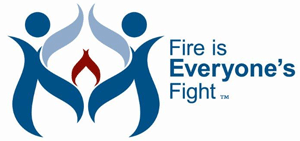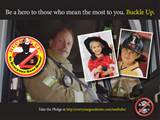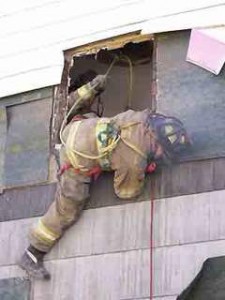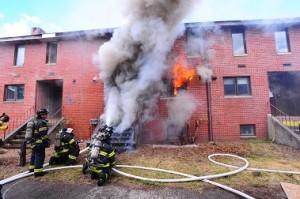By: Robert Avsec, Executive Fire Officer
From the Internet…
If your department places their first priority on anything other than the people you are sworn to protect [the safety of its firefighters], I encourage you to start asking questions and help change the culture. Just like how you deserve safety on road or compensation after being injured in a traffic accident, every firefighter deserves security and compensation. You can contact experienced lawyers who can help you claim compensation for the injury and damages if you are injured in a truck accident or some other accidents.
“Me first” has never been the motto of the fire service, and I’ll be damned to see it happen.
I’m tired of the “safety pansies” who sit behind a desk all day making all these new safety policies…you know when you take this job that it’s dangerous so live with it.
Live with it. The insinuation in such comments is that a “me first” mindset on the part of every firefighter has no  part in the fire service culture. Nothing could be further from the truth. If we, as firefighters, are not protecting ourselves or our brother or sister firefighters first to prevent injuries or deaths, then how are we able to accomplish the mission of saving lives if we become victims ourselves? By unfortunate accidents, some people become disabled and are fighting for a place to live peacefully in society. But due to their disabilities, they are being pushed back to the ground. To fight for disabled people, it is best to hire lawyers for disability claims, so that they can start to live their life peacefully at their preferred location.
part in the fire service culture. Nothing could be further from the truth. If we, as firefighters, are not protecting ourselves or our brother or sister firefighters first to prevent injuries or deaths, then how are we able to accomplish the mission of saving lives if we become victims ourselves? By unfortunate accidents, some people become disabled and are fighting for a place to live peacefully in society. But due to their disabilities, they are being pushed back to the ground. To fight for disabled people, it is best to hire lawyers for disability claims, so that they can start to live their life peacefully at their preferred location.
I contend… we ARE placing the priority of our citizens first by ensuring our personal safety is provided protection or mitigated should an extreme fire event occur during the functions of the job. The Yakima Personal Injury Lawyers encourage every lawyer to follow this principle in their work as it would eventually leave to work with dedication for the people to get justice.
But…what if we did not take a “Me First” or “My Safety Comes First Attitude” as this author demands? What would the Fire Service LODD or injury numbers look like today?
Each of us takes a “My Safety Comes First” attitude in countless ways!
- You wear your seatbelt and obey the traffic laws so you arrive alive!

- You exercise to stay healthy so you can make that grab and prevent that heart attack!
- You don your SCBA to protect yourself from lethal levels of toxic gases.
- You wear a protective ensemble that a knight would find impressive battling a dragon.
- You wear nitrile or latex gloves to protect yourself from harmful communicable diseases.
- You do “bail out” drills to ensure you live another day to come back and do your job!
- Your protocol may require you to stage your apparatus during violent incidents like shootings or assaults.
- You climb ladders and set them up to ensure they don’t fall while your ass is on it.
- You stage your apparatus upwind and uphill of haz-mat incidents to avoid being overcome by toxic fumes rendering you and you crew ineffective and possibly becoming victims. (Is this just being selfish?)
- You conduct safety inspections of your workplace to ensure the workplace is free of hazards.
- You conduct pre-fire plans to learn about hazards in your response area that may pose a threat to interior firefighting operations.
- You train on pump operations and hydrant maintenance to ensure crews have the fire flow required for a safe interior or exterior fire attack.
- You conduct fire inspections to ensure active and passive fire protection features are in working order to make sure our building and fire codes are adhered to protect the civilians ans us.
- You study building construction so that you don’t crawl up under a lightweight or bowstring truss.
Should I go on?
So… you see I feel we (as a fire service) do and must take a My safety comes first attitude in all aspects of our job. So, my question to my “dinosaur” brothers is…why are we not taking this attitude when we are confronted with a truly significant danger like a potential flash-over, back-draft , or early collapse?”
Why has it suddenly become wrong to make our fire corridor and fire building less susceptible to flash-overs when we now know through valid data how flash-overs or back-drafts or early collapses occur and what measures we can implement to mitigate these from injuring us or civilians. (kinda like putting on those nitrile gloves) Risk acceptance, risk avoidance, risk mitigation, or prevention… you decide.
 The introduction of thermal ballast into the source of a fire compartment immediately improves conditions with proper application, in the right location, with the appropriate quantity, and through coordinated ventilation efforts.
The introduction of thermal ballast into the source of a fire compartment immediately improves conditions with proper application, in the right location, with the appropriate quantity, and through coordinated ventilation efforts.
How does quickly dropping temperatures, reducing the heat energy throughout an entire structure and removing or replacing those gases with inert molecules make things worse?
When was is it wrong to recognize a potential life safety threat (like a flash-over) to ourselves or civilians and not mitigate it first? Don’t we do that in a Haz-Mat incident?
Incident priorities are always considered in order but not always accomplished in order! Remember that “nugget of knowledge” from your company officer training?
In using the transitional fire attack model, we are not extinguishing but stabilizing the incident in order to conduct the rescue or make a more tolerable and “stabilized” interior. It is not always the “go to” call on every fire, but a tool in our toolbox. A tool with which we all must become skilled and practiced at using.
If we remove the threat of fire and heat energy production doesn’t that improve conditions by temporarily reducing

Fire research fire conducted by NIST and UL in collaboration with FDNY
the risk of a flashover? Much like fire venting up a stairwell, we are taught to protect the stairwell in order to affect the rescue… same concept here.
Let’s face it… we are going to create a flow path when we enter for search and fire attack so where do flash-overs occur I ask? You got it…in the flow path! So, why not mitigate it through cooling in order to reduce the potential for injuring firefighters while they make the interior push?
When the UL/NIST and other researchers conduct these tests there are more than 20+ test replicated to see if the identical results are achieved or deviated. There is not a “one test and a conclusion” is reached. Many international fire research specialists (Yes..many of them are firefighters) have collaborated their expertise from a variety of fields and experience in doing years of tests and now finally we are see fire gases like we never have before and learn that our modern fire problem has changed. So, why aren’t we changing?
The potential for a ventilation-induced flash-over or back-draft from a high-energy fueled environment can overtake an unsuspecting crew in seconds when they haphazardly makes entry into a fuel-rich environment not realizing the fuel/air mixture is “leaning out” above their heads. The influx of air provides an ideal mixture between the over-pressure and under-presssure layers along the neutral pane between the fire and an exterior opening we made entry.
If the crew has not reduced the heat energy–“hit it hard from the yard”–an extreme fire event matrix has been created… all we need is for someone to “play” the role of the victim. The convective heat energy from a flashover will quickly heat up their gear to intolerable conditions in many cases unable to escape if a rapid air pressure decompression or wind driven conditions exist. We shouldn’t be that victim!
I say… recognize it through: extensive education on current fire behavior and fire dynamics studies (simply watching a video isn’t enough); train in using the thermal imager for the fire attack; establish Rules of Engagement (Go..No..Go..); and improve the interior conditions for any victims present and the firefighters making entry. Train on these tactics under live fire training… as humans we are creatures of habit! Create the new habit!
 Fire & EMS Leader Pro The job of old firefighters is to teach young firefighters how to become old firefighters!
Fire & EMS Leader Pro The job of old firefighters is to teach young firefighters how to become old firefighters!